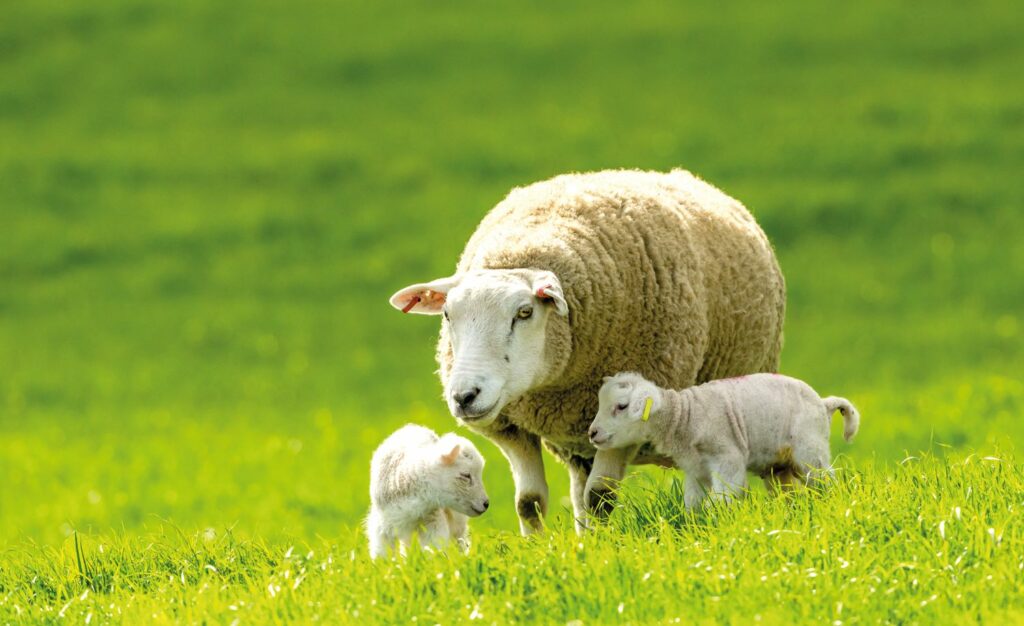Spotlight on: Ovine Johne’s disease
31st October 2022
Research has shown that clinical ovine Johne’s disease can cause a 46% reduction in overall productivity. Livestock technical veterinary advisor for Virbac, Kate Ingram, offers advice on prevention.
Ovine Johne’s Disease (OJD) is classified as one of the ‘iceberg diseases’, a term used to describe diseases that are often slow to develop, with more animals within the flock harbouring disease than those showing signs.¹ Of the iceberg diseases, OJD is the most commonly diagnosed and the proportion of UK flocks infected is likely to be high – a 2018 study screening for evidence of infection found that 64% of flocks tested were positive for Mycobacterium avium subspecies paratuberculosis (MAP), the bacteria that causes OJD².
Infected sheep can shed millions of MAP bacteria in their faeces and act as a source of infection to lambs and contaminate the environment. It is estimated that for every sheep with clinical disease there are 10–15 others sub-clinically affected in the flock – the ‘tip of the iceberg’. MAP is picked up by lambs in the first months of life, generally via the faeco-oral route but then lies dormant for a number of years before causing clinical, or visible disease.
The MAP bacteria cause chronic inflammation of the intestine with reduces absorption of nutrients, leading to progressive weight loss and can impact fleece quality and fertility, with clinical signs commonly seen in middle-aged (3–4-year-old) sheep.
At a flock level, signs of OJD include increased culling rates, reduced production figures and a lack of response to worm and fluke treatments. It has a significant impact on the profitability of flocks due to:
- Shorter productive life of ewes – sheep can die from two years of age
- Higher replacement costs
- Reduced lambing %, rearing % and finishing %
- Reduced cull ewe value
- Increased feed and medicine costs
- Loss of valuable bloodlines.
One study showed an overall reduction in productivity of 46% due to clinical Johne’s disease causing significant losses in live-weight, number of lambs born and in the lifetime production of ewes³.
There are a number of options available for testing for OJD including blood tests, faecal tests and post-mortem examination. Due to the nature of the disease, it can be challenging to identify infected animals. It is not until the bacteria starts to stimulate an immune response in the sheep and/or the bacteria starts to be shed by the sheep that tests will return positive results, meaning infected sheep may test negative for a number of years in the early stages of the disease, while the bacteria lie dormant. It’s important therefore for farmers to work closely with their vets to ensure the correct animals and correct tests are chosen, particularly when screening flocks, to maximise the chances of identifying infection.
There is no treatment for Johne’s disease, so farmers need to focus on management to control the disease and reduce the transmission within the flock. Protocols such as lambing high-risk shedding ewes (older and thinner) away from the younger breeding ewes in separate pens or separate lambing fields, should be feasible for most enterprises⁴. As bacteria are spread via faeces, good hygiene at lambing and not spreading manure or slurry onto grazing may also help reduce transmission.
Fortunately, there is also a vaccine available which can significantly reduce the impact of OJD and alongside management changes, help effectively control the disease in a flock. Sheep are vaccinated once in their lifetime, between four weeks and six months of age. Although vaccination does not eliminate disease from an infected sheep or guarantee that a lamb will not get infected, it has been shown to reduce mortality rates due to OJD in infected flocks by up to 90%, reduce clinical disease and prolong the productive life of ewes within the flock. Importantly it also significantly reduces the risk of transmission of the bacteria by delaying the onset of shedding by infected sheep and reducing the amount of MAP shed by up to 90%⁵, helping to reduce the risk of the spread of MAP into the next generation born onto the farm.
For flocks buying in stock there is also a risk of infection from incoming animals and so it is important that farms work with their vets to put protocols in place to minimise the risk, such as quarantine and vaccination. The proportion of flocks testing for OJD is currently low in the UK, however as awareness grows across the industry it is hoped that more flocks will test and so know their OJD status, allowing purchasers to buy from low risk or vaccinated flocks to minimise their risk of buying in infected animals.
The sheep industry is increasingly focused on control of the iceberg diseases, with ongoing research into the disease and its economic impact, and programmes aimed at increasing awareness. The government’s recently launched Animal Health and Welfare Pathway represents an opportunity for farmers to access support in tackling this disease. The pathway, a partnership between farmers, vets and the wider industry, is looking to ‘push forward and support the gradual and continual improvement in farm animal health and welfare’⁶, with iceberg diseases listed among the priorities for the sheep sector.
References:
1. Iceberg Diseases Factsheet. Stoc+ Project. Meat Promotion Wales.
2. Davies, P. (2018) ‘Iceberg’ infectious disease of sheep. SHAWG conference, Tamworth.
3. Morris, C. A., Hickey, S. M. & Henderson, H. V. (2006). The effect of Johne’s disease on production traits in Romney, Merino and Merino x Romney-cross ewes. New Zealand Veterinary Journal. 54(5):204-209.
4. AHDB Iceberg Diseases of Sheep Technical Manual.
5. Reddacliffe, L. (2005). Field evaluation of OJD control using Gudair. Meat & Livestock Australia.
6. https://www.gov.uk/government/publications/animal-health-and-welfare-pathway/animal-health-and-welfare-pathway (accessed 23rd September 2022).

